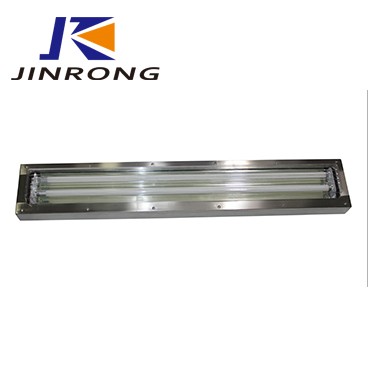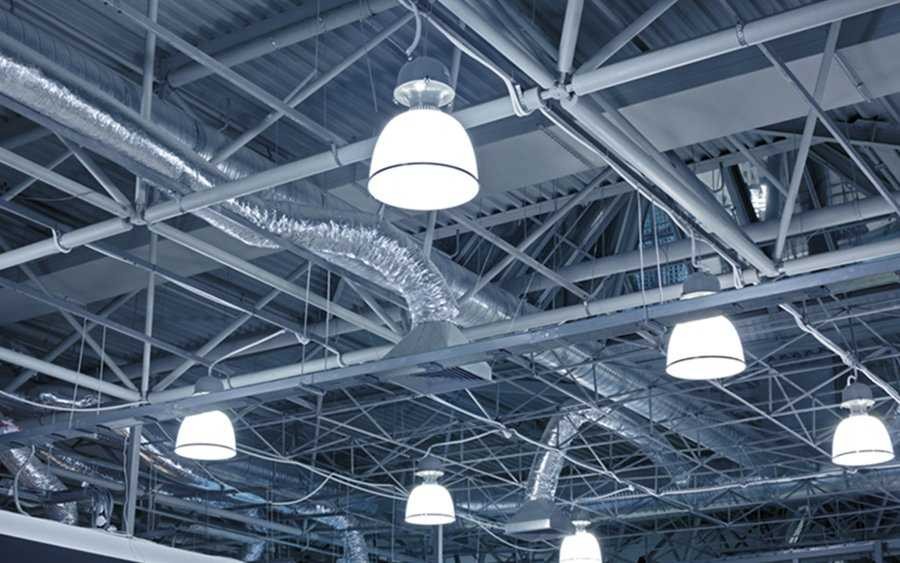Introduction

In the world of food processing, lighting is often an unsung hero, yet its importance cannot be overstated. Proper lighting not only enhances visibility but also plays a crucial role in ensuring food safety and compliance with various regulations. As we delve into the realm of food processing LED lighting, it becomes clear that choosing the right illumination can significantly impact operational efficiency and product quality.
Importance of Proper Lighting in Food Processing
Proper lighting in food processing environments is essential for several reasons. First and foremost, it aids in maintaining hygiene standards by allowing workers to spot contaminants or foreign objects during production. Moreover, adequate lighting improves worker productivity and morale, as employees are less likely to feel fatigued or strained in well-lit areas.
Benefits of Food Processing LED Lighting
When it comes to food processing LED lighting, the advantages are plentiful. Unlike traditional lighting options, LEDs offer superior energy efficiency and longer lifespans, which translates to lower operational costs over time. Additionally, these lights provide better color rendering and brightness control—crucial factors when considering what is the lighting for food production?
Safety and Compliance in Food Production
Safety is paramount in any food production facility; thus, understanding whether “are LED lights food safe?” becomes a critical question for operators. Compliance with regulations such as those set by the USDA ensures that facilities meet stringent safety standards while utilizing appropriate lighting solutions. By adhering to these guidelines and selecting suitable products from reputable lighting fixture manufacturing companies, businesses can create a safe environment for both employees and consumers alike.
Understanding Food Processing LED Lighting

What is the lighting for food production?
Lighting for food production refers to specialized illumination designed to meet the unique needs of food processing facilities. This includes areas where raw ingredients are prepared, cooked, and packaged, all of which require specific lighting conditions to ensure safety and quality control. So, what lighting is required in food prep areas? Brightness levels must be sufficient to allow workers to perform tasks accurately while minimizing shadows that could hide contaminants.
Advantages of LED over traditional lighting
When comparing LED lights to traditional options like fluorescent or incandescent bulbs, the advantages become clear quickly. First off, food processing LED lighting consumes significantly less energy, leading to lower electricity bills—a win-win for both your wallet and the environment! Additionally, LEDs have a longer lifespan than their traditional counterparts, reducing maintenance costs and downtime associated with bulb replacements.
Key features of food processing LED lighting
Food processing LED lighting comes equipped with several key features tailored specifically for this industry. These lights often have high color rendering indexes (CRI), which enhance color accuracy—vital when inspecting fresh produce or ensuring meat quality. Moreover, many fixtures are designed with durability in mind; they can withstand humidity and temperature fluctuations typical in food environments while remaining compliant with USDA lighting requirements.
Lighting Requirements for Food Prep Areas

What lighting is required in food prep areas?
In food preparation zones, bright and even lighting is crucial to ensure all surfaces are visible and any potential hazards can be easily identified. Food processing LED lighting is an excellent choice here due to its ability to provide consistent brightness without flickering or dimming over time. Additionally, these lights must meet specific requirements set forth by regulatory bodies like the USDA, ensuring they are suitable for environments where food is handled.
Guidelines for brightness and color temperature
For optimal performance in food prep areas, it's recommended that lighting levels reach at least 50 foot-candles (or lumens per square foot) on work surfaces. The color temperature of the lights should ideally fall within the range of 3500K to 5000K; this spectrum mimics natural daylight and enhances visibility without causing eye strain. By adhering to these guidelines, facilities can create a safe environment conducive to efficient food processing while complying with USDA lighting requirements.
Role of Lighting in Hygiene and Safety
Lighting plays a pivotal role in maintaining hygiene standards within food processing settings. Adequate illumination helps staff identify spills or contaminants quickly, allowing for immediate cleaning actions that prevent cross-contamination—a critical aspect of food safety protocols. Furthermore, using LED fixtures specifically designed for food environments ensures that they are not only energy-efficient but also free from harmful substances, addressing concerns about whether LED lights are food safe.
Safety Considerations for LED Lighting

Are LED lights food safe?
The question of Are LED lights food safe? often arises in discussions about food processing LED lighting. Generally speaking, LEDs are considered safe for use in food preparation areas as they do not emit harmful UV rays or contain toxic substances like mercury found in traditional fluorescent bulbs. Moreover, many manufacturers design their products specifically to meet industry standards, ensuring that the materials used in these fixtures are compliant with health regulations.
Addressing common safety concerns
Common safety concerns regarding LED lighting often include issues such as overheating and the potential for glass breakage. However, high-quality food processing LED lighting options are designed with heat management features that mitigate these risks effectively. Additionally, many fixtures come equipped with protective coatings or shatterproof designs that enhance safety in busy kitchen environments where accidents can happen.
Choosing the right fixtures for food environments
Selecting appropriate fixtures is essential when considering what lighting is required in food prep areas. Look for options specifically labeled as suitable for food processing; these typically have features such as easy-to-clean surfaces and moisture resistance to comply with hygiene standards. Furthermore, understanding USDA lighting requirements can guide you toward choosing reliable and compliant Food Processing Lighting Solutions that ensure both safety and efficiency in your operations.
Compliance with USDA Lighting Requirements

Ensuring compliance with USDA lighting requirements is crucial for any food processing facility. These regulations are designed to maintain safety and hygiene in environments where food is prepared, stored, or processed. Understanding these requirements can help facilities choose the right food processing LED lighting solutions that meet both operational needs and regulatory standards.
What are the USDA lighting requirements?
The USDA has established specific lighting requirements to ensure safe food production practices. These guidelines dictate the type of lighting used in food prep areas, emphasizing brightness and color temperature suitable for various tasks. For instance, adequate illumination is essential for proper cleaning and inspection processes, making it vital to understand what is the lighting for food production within these parameters.
Essential regulations for food processing facilities
Food processing facilities must adhere to stringent regulations that cover everything from sanitation to equipment maintenance, including their lighting systems. The regulations specify not only the intensity of light but also its placement and maintenance protocols to avoid shadows that could harbor contaminants. By following these essential regulations, businesses can create a safe environment while maximizing the benefits of food processing LED lighting.
How to ensure compliance with USDA standards
To ensure compliance with USDA standards, facilities should conduct regular audits of their lighting systems and fixtures used in food prep areas. This includes verifying that all installed lights meet safety specifications and are properly maintained over time—after all, no one wants flickering lights when they need consistent brightness! Additionally, partnering with reliable lighting fixture manufacturing companies specializing in food-safe solutions can streamline this process while ensuring optimal performance of your chosen food processing lighting solutions.
Choosing the Right Food Processing Lighting Solutions

When it comes to food processing LED lighting, the choices can be overwhelming. Various lighting fixture manufacturing companies offer a plethora of options designed specifically for food production environments. Understanding the nuances of these products is essential for ensuring that your facility meets both operational needs and safety standards.
Overview of various lighting fixture manufacturing
The landscape of lighting fixture manufacturing has evolved significantly, particularly in the realm of food processing LED lighting. Manufacturers now focus on creating fixtures that not only provide optimal brightness but also adhere to stringent hygiene standards required in food prep areas. From high-bay lights for expansive processing floors to task lighting for intricate prep stations, there’s a solution tailored for every aspect of what is the lighting for food production?
Factors to consider when selecting lighting solutions
Selecting the right food processing lighting solutions requires careful consideration of several factors. First, assess the specific requirements based on what lighting is required in food prep areas; different tasks may demand varying levels of brightness and color temperature. Additionally, ensure that any chosen fixtures comply with USDA lighting requirements, as this will safeguard against potential compliance issues down the line.
Case studies of successful food processing lighting installations
Real-world examples can illuminate how effective food processing LED lighting can transform operations within facilities. One notable case involved a large meat processing plant that switched from traditional fluorescent lights to energy-efficient LED fixtures, resulting in a 30% reduction in energy costs while enhancing visibility across all workstations. Another success story features a dairy facility where proper selection and installation of LED lights improved not only safety but also compliance with USDA regulations regarding sanitation and hygiene.
Conclusion

In conclusion, the significance of food processing LED lighting cannot be overstated. This innovative lighting solution not only enhances visibility in food production areas but also promotes safety and compliance with industry regulations. By understanding what is the lighting for food production, facilities can make informed decisions that ultimately lead to better operational efficiency.
Recap of Food Processing LED Lighting Benefits
Food processing LED lighting offers numerous advantages over traditional options, including energy efficiency, longer lifespan, and reduced heat output. These benefits contribute to lower operational costs while maintaining optimal working conditions in food prep areas. Moreover, LEDs provide superior color rendering, which is crucial for ensuring that food products are visually appealing and safe for consumption.
Ensuring Safety and Compliance in Food Facilities
Safety is paramount in any food processing environment, and understanding what lighting is required in food prep areas helps to achieve this goal. Compliance with regulations such as USDA lighting requirements ensures that facilities maintain high hygiene standards while preventing hazards associated with poor visibility or inadequate illumination. Additionally, addressing questions like Are LED lights food safe? reinforces the importance of selecting appropriate fixtures that meet both safety and regulatory standards.
Finding the Right Partner for Lighting Solutions
When it comes to implementing effective food processing lighting solutions, partnering with a reputable manufacturer of lighting fixture manufacturing is essential. These experts can guide you through the selection process based on your specific needs while ensuring compliance with all relevant guidelines. With a reliable partner by your side, you can confidently navigate the complexities of choosing the right food processing LED lighting system tailored to your facility's unique requirements.

